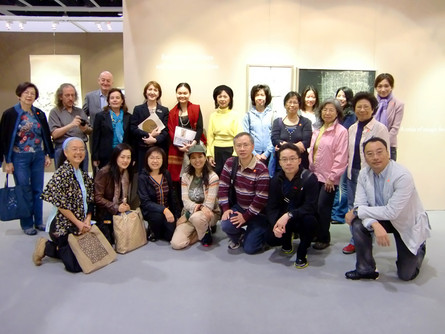As a finale to our 20th Anniversary celebration, The Hong Kong University Museum Society is proud to sponsor the exhibition, The Silk Road in Ningxia, from 13 December 2008 to 15 March 2009, (please see page13) and present this half-day seminar to our members and the community.
Lecture 1: Ningxia and its Place on the Silk Road with Dr. Susan Whitfield
This lecture will give an overview of the role of Ningxia from the opening of the Silk Road in the second century BC through the defeat of the Tanguts and the rise of the Mongol dynasty in the thirteenth century. It will consider how the geography and position of this region has led to be open to a mix of cultures: the steppes to its north, Tibet to its south, the desert oases to the west and China to the east, and will consider the arts and beliefs engendered by these dynamics.
Lecture 2: Western Xia Buddhism and its Art with Professor Puay-peng Ho
Buddhism was promoted as a state religion by Yuan Hao who inherited the throne in 1036. He sponsored many building and translation projects as well as the printing of Xixia Tripitaka. The promotion of Buddhism continued throughout the two millennia of Western Xia (Xixia). This lecture will outline the development of Buddhism during the Western Xia period and their architectural and artistic expressions. It will demonstrate the sinicization process adopted by the State of Western Xia through their support to Buddhism.
Intermission 8 Jan.-Feb. 2009
Lecture 3: Sogdian Traders in Ningxia: life and death with Dr. Susan Whitfield
Many of the tombs excavated at Guyuan were of Sogdians, the great traders of the Silk Road, who set up communities in the market towns stretching from their homes in Samarkand, Bukhara and Tashkent, through to Chang’an. This lecture will look at their art and beliefs and how they both influenced and were influenced by their encounters along the Silk Road and with China.
Lecture 4 Xumishan Buddhist Grottoes with Professor Puay-peng Ho
One hundred and thirty two caves at Xumishan, Ningxia province, spanning from Northern Wei to the Tang dynasty, can be considered as one of the most substantial grotto sites in China. Located along a silk route from Chang’an just outside the important trading town of Guyuan, the site retains many important examples of Buddhist sculptures of Sui and early Tang. This lecture will explore the characteristics of Xumishan Grottoes in relation to the sites in Maijishan and Binglingsi grottoes.
About the Speakers
Dr. Susan Whitfield is an historian of China and the Silk Road. She works in the British Library where she is the Director of the International Dunhuang Project, whose purpose is to make the manuscripts, paintings and artefacts from the Eastern Silk Road freely available to all via the Internet. She has lived and travelled extensively in China and along the Silk Road and has written many books on history and art, among them Life Along the Silk Road. She curated the exhibition, The Silk Road: Trade, War and Faith held at the British Library in 2004 and is currently working on another major Silk Road exhibition to be held in Brussels in 2009.
Professor Puay-peng Ho, currently Dean of Students, is Chairman and Professor of the Department of Architecture at the Chinese University of Hong Kong. He received his First Class Honours degree in Architecture from the University of Edinburgh and a Ph.D. in Art History from the School of Oriental and African Studies, University of London. His thesis was focused on Buddhist art and architecture of the Tang dynasty. Professor Ho is a member of the Royal Institute of British Architects and the Society of Architectural Historians. His research interests and publications are in the areas of Chinese art and architectural history, vernacular architecture, and architectural theory.










